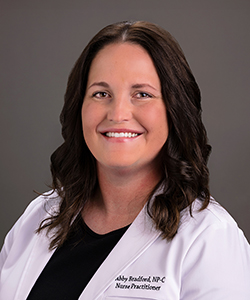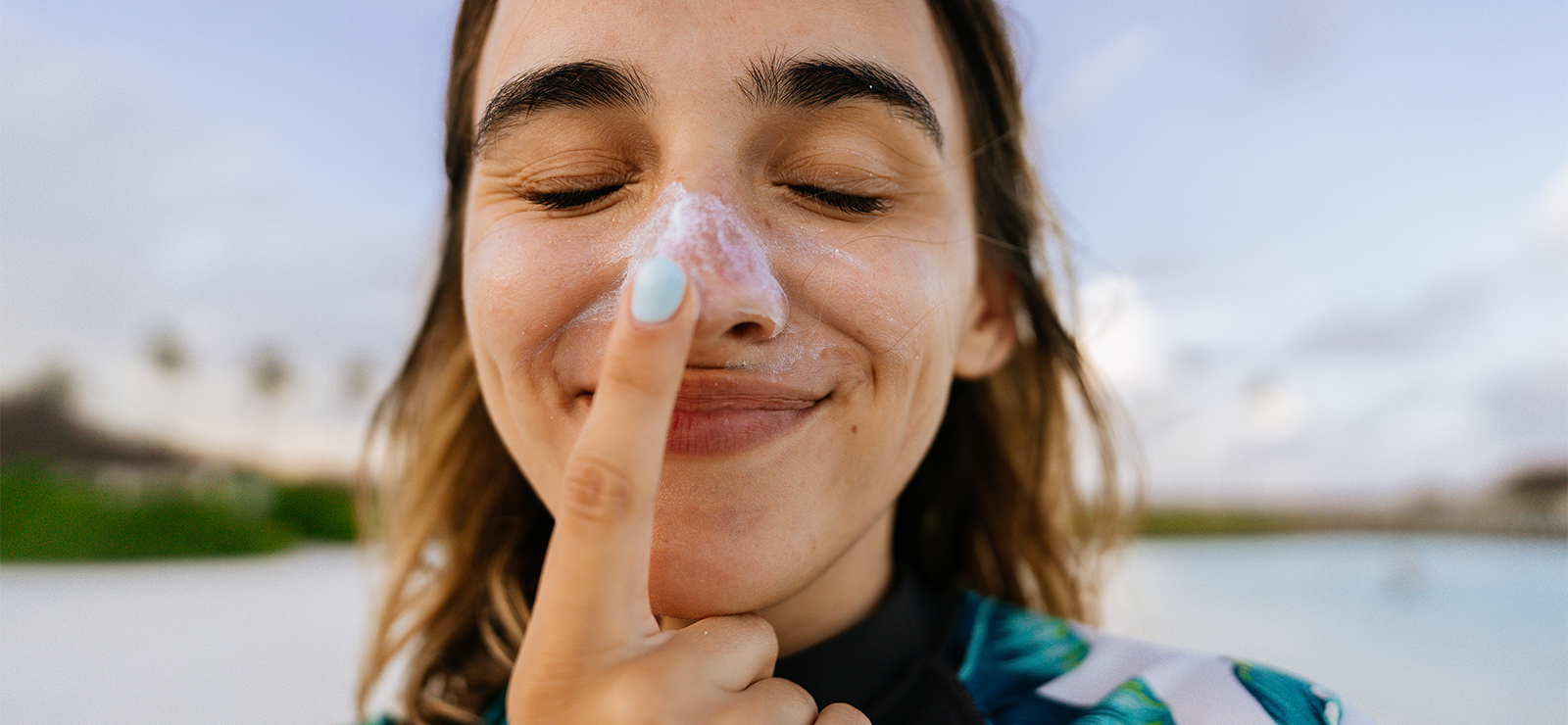June 25, 2024

There’s nothing better than the feel of the sun on your skin. It provides vitamin D and is a natural mood booster. But sadly, that ball of fire in the sky can damage your delicate skin in more ways than one if you don’t protect it — and protect it well.

You may think this warning doesn’t apply because your makeup contains SPF (sun protection factor). Or you might be vigilant about spraying everyone in the house before a day spent at the beach, pool or sporting events. Those efforts are a step in the right direction, but you have to do more, says Abby Bradford, an MU Health Care nurse practitioner specializing in dermatology.
“Everyone’s exposure to harmful UV (ultraviolet) rays is different, but we are all exposed,” Bradford says. “The sun contains UVA rays, which ‘tan and age’ you, and UVB rays, that ‘burn’ you. So day-to-day exposure can cause cell damage, skin cancer and premature aging, as well as worsen any pigmentary disturbances such as melasma or vitiligo. It doesn’t matter what type of skin you have or whether you have a family history of skin cancer.”
To help you avoid daily and damaging exposure to UV rays, Bradford shares surprising facts that may change the way you protect your skin:
1. You Are Exposed to UV Radiation More Than You Realize
UV damage doesn’t just occur when you are out in the sun all day. According to the Skin Cancer Foundation, UV rays also sneak in when you least expect it, including:
- At work: Office or home windows filter out most UVB rays. But more than 50% of UVA rays come through, exposing your skin whenever you are within several feet of a window.
- At the nail salon: UV and LED nail lamps expose you to UV rays, so it’s critical to slather on sunscreen before getting your nails done. The exposure is only moderate, but the damage builds over time.
- High elevations: Your exposure to UV radiation can increase by 5% with every 1,000 feet you climb.
- Snow, ice and water: If you’re out in the snow or water (skiing or tubing, for example), your exposure doubles when UV rays reflect off the surface.
- Rainy days: UVA rays can penetrate clouds, rain and fog.
- While driving: Front windshields are typically engineered to block most UVA rays, but the side and rear windows offer little protection.
“We find a lot of skin cancer on people’s left arms because of exposure while driving,” Bradford says. “You need to think about how you spend your day. Even sitting outside at a restaurant for lunch or happy hour increases the sun exposure on your legs.”
2. Sunscreen Should Be a Base Layer
Bradford recommends daily use of a broad-spectrum sunscreen (which protects against UVA and UVB rays) with an SPF of 30+. But putting it on as you walk out the door will not provide the best protection.
Experts recommend applying sunscreen to clean skin as part of your skincare routine, before you apply makeup (even if your makeup has SPF). Be sure to use enough sunscreen to protect your face and neck. If you need help remembering to apply daily, Bradford recommends setting your sunscreen near other items you routinely use, like your face and body moisturizer or your toothpaste.
3. Spraying or Swiping Alone Is Not Enough
Stick and spray sunscreen make it easier to protect your skin, especially when reapplying every two hours, as recommended. But these application methods leave a lot of room for error.
If using a stick, the American Academy of Dermatology Association suggests applying at least four swipes of sunscreen for each area you need to protect. When spraying, try to avoid any wind that may blow it away before it hits your skin. No matter which method you choose, make sure to rub the sunscreen into the skin.
“It’s a common misconception that you don’t have to rub it in if you use spray or stick sunscreen, but you do,” Bradford says. “Think of it like connecting the dots. It will ensure even coverage.”
4. Using Sunscreen Every Day May Eliminate the Need for Botox Later
Skin naturally ages (chronological aging) and may get thin, dry and finely wrinkled with time. But regular exposure to UV rays — especially UVA — can cause a different type of aging (photoaging) that leads to thick wrinkles, uneven coloring and leathery texture.
Both time and the environment reduce and damage your skin’s collagen and elastin — the proteins that keep your skin looking youthful and supple. But the sun changes your DNA at the cellular level in the deepest layers of your skin, so it can take years to notice.
“Wearing sunscreen and being careful about sun protection is the best thing you can do for anti-aging,” Bradford says. “A lot of patients ask about Botox® and retinol to reduce the signs of aging, but I have patients who don’t need those treatments because they’ve been religious about sunscreen use.”
5. Sun Protective Clothing Exists and Can Be Used With Sunscreen
A surefire way to protect yourself (and your family) from the sun is to use products with UPF (ultra protection factor) in addition to a daily regimen of sunscreen. You can find UPF umbrellas, hats, shirts and bathing suits, which provide another level of protection.
“People think they’re protected when they have clothing on, but a regular white T-shirt only has up to 10 SPF,” Bradford says. “UPF clothing is essentially sunscreen built into your clothing. You’ll need to protect exposed skin, but most protective clothing is UPF 50 and eliminates the need to reapply sunscreen to covered areas.”
The UPF does wash out of the clothing — the label should tell you how many washes the protection lasts.
6. You Can Get Skin Cancer in Unexpected Places
Skin cancer can strike anywhere , including:
- Ears (both inside and on the tips)
- Eyes and eyelids
- Palms of your hands
- Scalp
- Soles of your feet
- Under fingernails
“We have pigment cells throughout our bodies, and anything with pigment is at risk for melanoma,” Bradford says. “You may think a baseball cap protects you but take it a step further and opt for a wide-brimmed hat or a hat with a neck flap. And don’t forget the sunglasses.”
Next Steps and Useful Resources
- Want to discuss more with a doctor? Speak with a dermatologist.


